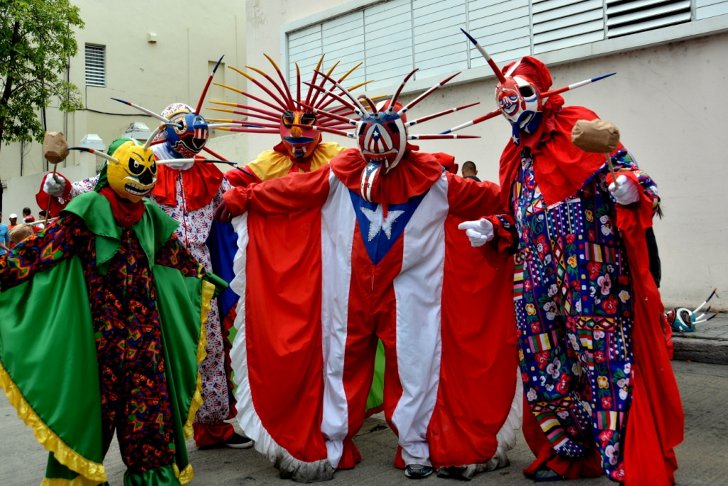The origins of the Ponce Carnival are unclear, but the first written mention of the celebration dates back to 1858. The tradition has most likely been brought by European settlers. Carneval de Ponce started as a masquerade ball organized by a Spaniard named José de la Guardia.
The Ponce Carnival was officially adopted by the Puerto Rico Tourism Company in 1937. The parade was added to the program in the 1950s by the Municipality of Ponce. Since then, colorful parades have become an integral part of the Carnival, attracting thousands of spectators from all over Puerto Rico and abroad.
Carnaval Ponceño starts on the Wednesday before Fat Tuesday (Mardi Gras). It kicks off with a Vejigantes Party. Vejigantes are folkloric characters in Puerto Rican carnival celebrations wearing brightly colored masks and costumes with bat-like wings. They traditionally represent evil. The term vejigante is derived from the word vejiga (bladder), it is associated with the custom of inflating and painting cow bladders. In Ponce, vejigantes wear papier-mâché masks with horns. They carry cow bladders with which they hit people throughout the celebrations.
On Thursday, King Momo arrives in the city in a vibrant procession. King Momo is the king of the Ponce Carnival, he embodies the festive spirit. Two Queens of the Carnival are crowned on Friday (the Child Queen) and on Saturday (the Adult Queen).
The main highlight of the Carnival is the Main Parade held on Sunday. It features the King, the Queen and their court, vejigantes, lavishly decorated allegorical floats, dance troupes, marching bands, folk groups, costumed characters, and more. The traditional masquerade ball takes place on the following Monday. The Carnival ends on Fat Tuesday with the ceremonial burial of the sardine which embodies the spirit of the Carnival.

Photo: Carlos A. Aviles




